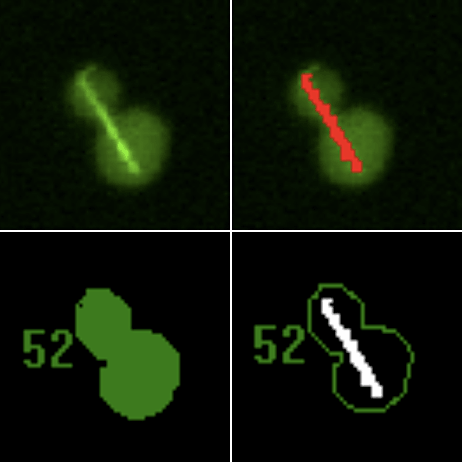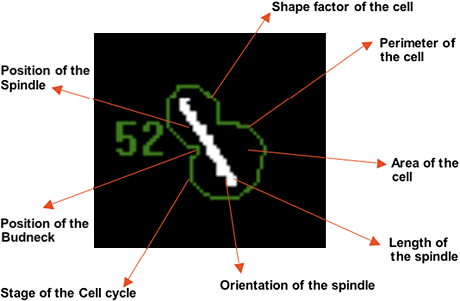| 1. | Genetic Networks: Large-Scale Mapping of Synthetic Lethal Interactions | |
| a. | Mapping Genetic Interaction Networks | |
| b. | Genetic Interaction Data - Imaging, Processing, and Analysis | |
| c. | Temperature Sensitive Conditional Mutant Collection | |
| d. | Modeling Genetic Networks | |
| 2. | Sigma Deletion Mutant Collection | |
| 3. | High-Content Cell Biology | |
| 4. | Chemical-Genetics | |
| a. | Comparing Chemical-Genetic & Genetic Interaction Networks | |
| b. | Barcoded Yeast Gene Library: Drug-Resistant Mutants and Dosage Suppression | |
| 5. | Mapping Protein-Protein Interaction Networks for Peptide Recognition Modules | |
High-Content Cell Biology
Collaborative Project with Brenda Andrews' Lab
People
Franco Vizeacoumar, Nydia van Dyk
To facilitate a functional genomics approach to cell biological problems, we are combining our automated form of yeast genetics, SGA methodology with a powerful cell biological screening system, the High Throughput Microplate Imaging System (HTMIS). The integration of SGA technology with HTMIS should increase the resolution of the SGA system such that all double mutants are examined for numerous morphological synergistic phenotypes, not just the rare synthetic lethal combinations, enabling the detailed molecular investigation of numerous biological processes.
As a test case, we are examining the spatial coordination of the mitotic spindle with the cell-division axis is crucial for embryonic development, organogenesis and tissue homeostasis (Fig.10). In the budding yeast, Saccharomyces cerevisiae , this coordination of the spindle with the cytokinesis apparatus is achieved through migration of the nucleus to the bud neck. This positioning of the mitotic spindle at the onset of anaphase plays an important role in chromosome segregation and genetic stability. A variety of other cellular processes such as the cytoskeletal organization, cell polarity, cell cycle and related processes seem to regulate directly or indirectly spindle positioning. Hence we are interested in understanding how the spindle dynamically reacts to different cellular cues and how it interprets them to find its correct position and systematic chromosome segregation.




